‘Hurting people’: The ‘cover-up teams’ operating on the US border
When US Border Patrol pursuits of migrant vehicles have led to accidents, an opaque unit has been among those responding.
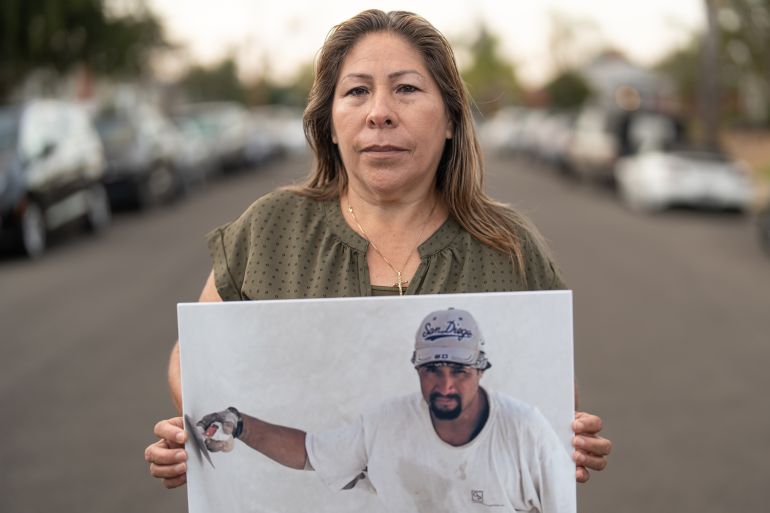
El Paso, Texas – In the early morning darkness of August 3, 2021, Lesvin Gamez rode in the back of an SUV with eight other undocumented immigrants along a rural highway in southern New Mexico.
The 23-year-old was nervous, but the thought of reuniting with his mother in Albuquerque, only 322 kilometres (200 miles) away, comforted him. This was his plan since he was a teenager, when he started giving haircuts to earn enough to pay a smuggler.
Keep reading
list of 4 itemsImpunity at the Border: Inside US Border Patrol’s ‘cover-up’ unit
US border agents used ‘unnecessary force’ on Haitians: Report
New crisis brewing for Venezuelans turned back at US border
More than two months ago, he left his town on the Caribbean coast of Honduras on a bus bound for Mexico. A week and a half later, he arrived in Ciudad Juarez – a city on the border with the United States that had been torn apart by cartel violence. From there, he could see the city of El Paso, Texas through the steel slats of the border fence separating the countries. He stayed there for two months, cutting hair to earn more money before finally deciding it was time to cross.
Smugglers led him and more than a dozen other immigrants on foot for hours through the Chihuahuan Desert at night to avoid US border agents on patrol. They weren’t allowed to take water or food – it would only slow them down. At the wall, the smugglers instructed them to climb to the top and jump to the ground nearly seven metres (23 feet) below, and then run as fast as they could to the hills.
Gamez is slim and athletic from years of playing football as a kid. He quickly made it over the wall but witnessed a pregnant woman fall from the top and not get up. A man rushed to her aid and dragged her away. Gamez turned and ran into the dark desert, now in the US.
After crossing the border, he rode with nine strangers on the final part of his journey. The danger, he thought, decreased with every passing mile.
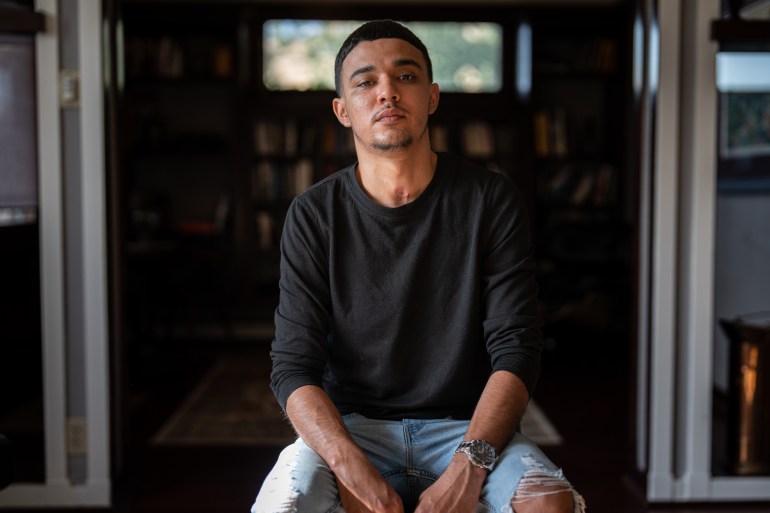
‘I felt the Border Patrol hit us again’
The smugglers who helped Gamez reach the US organised this final ride from El Paso to Albuquerque. The driver was a 25-year-old US citizen named Erik Molix. He was tall, bearded and had tattoos covering his large arms; a portrait of his mother smiled from his forearm. He didn’t say much during the drive, and Gamez couldn’t tell if he could trust him. The other passengers were silent, too. They anxiously awaited the moment when they would get out of the SUV and walk into the desert to sneak around a US Border Patrol checkpoint.
They were only a few miles from the checkpoint when they passed an agent’s patrol vehicle. Molix panicked and drove faster, then pulled over and yelled at his riders to get out and run. Gamez said a man in the front seat escaped, but the doors in the back were locked. Flashing emergency lights appeared behind them. Molix began to drive again, and at that moment, the agent rammed the rear of the SUV, according to Gamez.
“I remember that as soon as they hit us in the back, this coyote grabbed the wheel like he was driving a Ferrari,” he said.
Gamez tried to crawl into the front seat so he could jump out, figuring the risk of injury at this speed was better than being deported.
“I stared at the speedometer and saw we were going like a hundred and something. The car was even shaking. And right when I got up, I felt the Border Patrol hit us again, and that’s where I lost consciousness.”
The Border Patrol blamed the crash on Molix. In a press release, the agency later said he “lost control and crashed” while fleeing from pursuing agents. There was no mention of the vehicle being rammed.
Al Jazeera’s Fault Lines tracked down Gamez with the help of a reporting partner in Honduras. This is the first time that he’s shared his story. The Border Patrol never contacted him to explain what had happened nor asked for his account. His story runs contrary to the Border Patrol’s version of events and raises questions about the involvement of an opaque evidence-gathering unit that is designed to protect agents from potential lawsuits.
‘They’re cover-up teams’
An agent on patrol that morning, more than 100km (62 miles) north of the border, said he noticed an SUV that appeared to be weighed down, according to a US Border Patrol report. The chase started when the SUV swerved around the Border Patrol checkpoint. Another agent in a separate vehicle joined the pursuit, which lasted about a mile and a half. It ended when the SUV rolled over. Border Patrol reported the crash to the regional emergency dispatcher and said, “There was a vehicle that got clipped,” according to an audio recording of the phone call.
Gamez, Molix and six others were thrown from the vehicle as it rolled over and settled upright in a muddy orchard. Gamez spent the following six weeks comatose. Molix and an Ecuadorean man died soon after the crash.
Agents called a secretive unit called a Critical Incident Team – or CIT – within 20 minutes of the rollover, according to agency records. Body camera footage from the New Mexico State Police shows a Border Patrol agent telling the officer, “Our Critical Incident Team is coming out. They do all the crime scene stuff. Well, not crime scene but critical incident scene diagrams and statements and all that.”
US Customs and Border Protection (CBP), the agency that oversees the Border Patrol, rarely mentions CITs publicly, and little is known about how they operate. In a recent public memo, the agency says that they exist to “provide specialized and vital support” to the Office of Professional Responsibility (OPR) – the agency’s internal affairs office, which investigates agent misconduct. They are allowed to document scenes and gather evidence, which is used in OPR’s final reports.
But last year, an internal training document was leaked. It revealed that the role of CITs is the “mitigation of civil liability” for the agency and that it “preserves and protects the integrity of the Border Patrol and its personnel.”
Andrea Guerrero is a human rights lawyer and activist based in San Diego, California who has spent the last year investigating how CITs gathered evidence in the 2010 death of an immigrant in Border Patrol custody.
She said it is a blatant conflict of interest to have Border Patrol investigate fatalities involving its own agents, and that CITs may have been used to hide misconduct. “At the end of the day, they’re one thing: They’re cover-up teams,” she said.
Aside from CITs, multiple law-enforcement entities typically respond to injuries or deaths involving Border Patrol agents, including state and local police, the Department of Homeland Security, the FBI and OPR. But the details and findings of investigations are seldom made public, and agents are rarely disciplined for wrongdoing. Fewer than four percent of misconduct claims result in Border Patrol agents being fired, according to a 2021 internal report.
A fatal encounter
The 2010 killing of Anastasio Hernandez Rojas drew international attention and revealed the involvement of CITs. Hernandez Rojas emigrated from Mexico to San Diego when he was a teenager, and lived there for more than 25 years without citizenship papers before getting deported. Border Patrol apprehended the 42-year-old crossing back into the US illegally to rejoin his wife and five children.
Border Patrol agents beat, kicked and shocked him with a Taser while his hands and feet were bound behind him. Bystanders witnessed this from a pedestrian bridge. Witnesses later said agents took their phones and deleted photos and videos of the incident.
Hernandez Rojas suffered a heart attack, five broken ribs, a damaged spine and contusions. He was declared brain dead at the hospital and died three days later. His death was ruled a homicide.
Border Patrol claimed that Hernandez Rojas was unrestrained and aggressive, and the US Department of Justice decided not to charge the agents involved.
After the assault, the San Diego Police Department opened a homicide investigation as part of their standard procedure. A detective repeatedly asked for security camera footage that would show exactly what happened to Hernandez Rojas. But the tapes had been recorded over.
“The video was passed through many hands. The last hands it touched were the Border Patrol Critical Incident Team’s,” Guerrero said. “They had an affirmative duty to preserve all of the evidence, including the video footage. And they did not.”
Two years later, a witness came forward with a phone video that was aired on PBS, a US television network. It appeared to show Hernandez Rojas surrounded, pinned to the ground, handcuffed and begging for his life while an agent tases him. The witness said she hesitated to release the video because what she say disturbed her so much that she was afraid of retaliation from Border Patrol. “I had just witnessed a murder,” she told reporters.
Reconstitute under a different name
Border Patrol has released few details about the incident, and no agent was ever disciplined. But the Hernandez Rojas case was heard on November 4 by the Inter-American Commission on Human Rights (IACHR) in Washington, DC. The IACHR is an intergovernmental organisation made up of countries in the Americas, and it keeps member states accountable to one another through rulings and policy suggestions. This is the first time a case involving a person killed by US law enforcement officers was brought to the commission.
Hernandez Rojas’ family wants the IACHR to compel the US Department of Justice to reopen the homicide investigation, for CBP to reform their use-of-force guidelines and for them to issue a public apology.
The family settled with the federal government for $1 million in 2017 but still wants accountability and reform.
“Every agent who violates a person’s rights, who beats a person or murders needs to be charged,” Maria Puga, the widow of Hernandez Rojas, said. “I think for me that would be just. Me and my children have suffered, no other family should suffer this. It has to be stopped.”
A representative for the US government at the IACHR argued that the commission should drop the case because a settlement had been reached in federal court.
The commission will likely make its decision on the case sometime next year.
Earlier this year, the US Congress agreed to investigate CITs at Guerrero’s urging.
In May, after scrutiny from members of Congress, CBP Commissioner Chris Magnus announced the disbanding of CITs and said that OPR will assume CIT responsibilities and hire up to 350 additional people. In an email, CBP told Fault Lines that they would consider hiring former CIT employees at OPR and that as of October 1, the units would cease to exist.
“All of the cases that have involved border agents need to be reopened and reinvestigated,” Guerrero said. That number could be in the hundreds since CITs have operated for 35 years.
James Wong is the former deputy assistant commissioner in the internal affairs office at CBP. He spent much of his career in internal affairs divisions throughout the federal government. “CBP had the worst accountability measures,” he said.
Wong and his former boss at CBP, James Tomsheck, became outspoken critics of the agency’s lack of accountability after senior officials dismissed their concerns about corruption and cover-ups within Border Patrol. He believes that disbanding CITs likely won’t make a difference. “I have a strong suspicion they’ll reconstitute those teams under a completely different name,” he said.
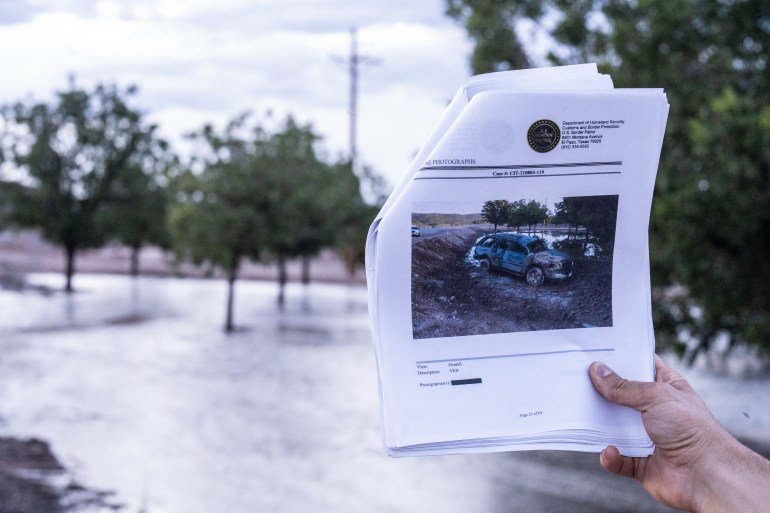
The crash report
Through a records request to the New Mexico State Police, Shaw Drake, a lawyer with the American Civil Liberties Union, obtained a 162-page investigative report of the August 3 crash prepared by the Border Patrol’s CIT. Border Patrol has never released one of these reports to the public.
The CIT investigation concludes that there was no contact between the vehicles and offers no further explanation, despite the emergency dispatch audio recording saying there was a “vehicle that got clipped.”
“So, of course, our question is, ‘Where did that come from?’,” Drake said. “That had to have come from somewhere. This dispatcher is not making that account up.”
The CIT report says the crash likely happened because the vehicle was weighed down with people.
It includes photos of Molix’s SUV but no clear ones of the agents’ cars at the scene. In a timeline of events, the CIT agent investigating the crash describes one of the vehicles in pursuit as a “marked sedan” but the photos of the patrol vehicles allegedly involved are of SUVs – and they were taken six days later in unspecified locations. One photo shows a Border Patrol SUV on a vehicle lift in what appears to be a mechanic’s shop.
“There’s no information in the report to prove that those are actually the vehicles that were involved in the pursuit. There’s no documentation of the chain of custody of those vehicles,” Drake said. “All we have are these photos, one in a parking lot and one in a garage.”
The CIT report includes summary statements from survivors. But each one is barely more than a sentence long. The statements only reveal where the survivor was sitting and what they saw the driver do. Gamez said he’d never heard Border Patrol’s account of the crash until Fault Lines showed him the report.
“I don’t know why they say we crashed,” Gamez said. “We didn’t crash into anything. It was something they caused with the impact against the back of our car.”
CBP did not respond to an email with questions about the crash or the role of the CIT.
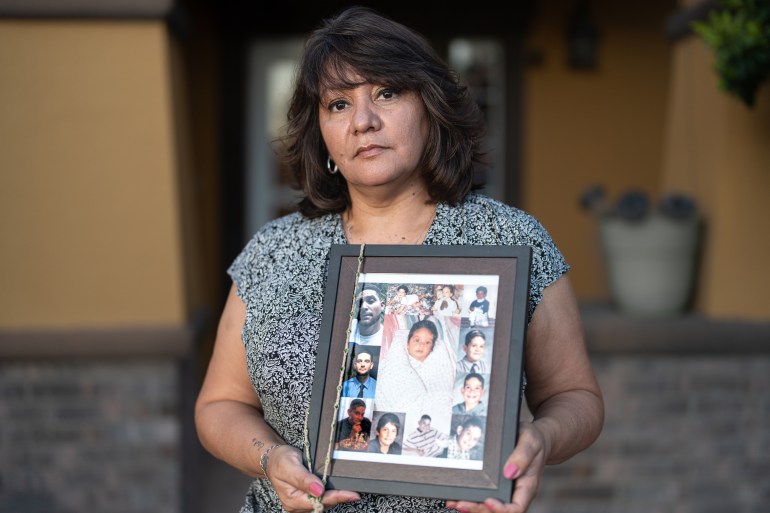
A pattern of deadly chases
CBP is the largest law enforcement agency in the country – with nearly 20,000 Border Patrol agents. Its jurisdiction extends 161km (100 miles) from any border, which encompasses land occupied by two-thirds of the population of the US.
The Border Patrol is arresting more migrants at the US border than it has in the previous six decades. And with that, deaths from vehicle pursuits involving Border Patrol agents have increased elevenfold between 2019 and 2021. This year was the deadliest yet, with at least 19 deaths resulting from border agent chases.
Since 2010, at least 145 people have reportedly died in high-speed pursuits and use-of-force incidents involving Border Patrol, according to the Southern Border Communities Coalition, an organisation that advocates for greater oversight of border agents. Fault Lines was unable to find evidence of discipline against agents in any of those fatalities.
“They never recognised the fact – or they would not accept the fact – that they were a law enforcement agency and had to abide by the law,” Wong, the former CBP official, said.
More than a year has passed since the New Mexico crash, and Angie Simms, the mother of Erik Molix, still has no answers. She says no one from Border Patrol ever explained what happened to her son early that morning. She held a memorial for him, where friends and family let loose white balloons.
“You know, he had his things, no child is perfect. But I know him and I know how he is. He’s not a bad person. Never was,” she said of her son.
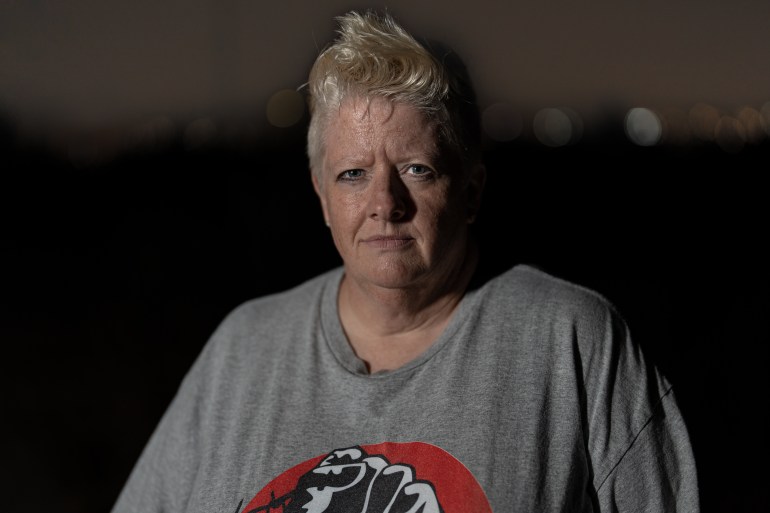
‘They’re hurting people’
Molix was supposed to go by his mother’s house in El Paso to pick up his laundry the night of the crash. She and her sister searched for him for five days after he went missing. They called hospitals in the area, and each said Molix wasn’t there. Simms’s sister is a nurse at one of those hospitals, and had heard about a car crash where several patients were flown in by helicopter. She checked the ICU at the hospital where she works and found Molix lying in a coma.
“He was there by himself for five days, laying there, other people making decisions for him,” Simms said, holding back tears.
Molix’s spine was fractured, and his lungs collapsed. He suffered a traumatic brain injury when he was thrown from the truck. Agents were still in the hospital lobby to keep an eye on him. But none of them would explain to Simms why her son was on life support. Molix died in the hospital nearly two weeks after the accident.
Neither the agents nor the hospital ever contacted Simms to tell her that Molix had been in an accident despite being in possession of his driver’s licence with her address on it, Simms said.
“They’re not transparent. They’re hiding things,” she said. “Border Patrol obviously is doing something and they keep doing it knowing that they’re hurting people and causing deaths.”
Many police departments in the US are tightening their high-speed pursuit policies, limiting officers from engaging except in strict circumstances. After pressure from lawmakers earlier this year, CBP announced that it would update its pursuit policy to prioritise safety. But new guidelines have yet to be released.
Jenn Budd was a Border Patrol agent based in San Diego. She’s now become a critic of the agency. She says she was trained to make fleeing cars crash. “In the academy, they teach you the professional way that, number one, if you suspect that they are undocumented migrants, that’s not worth chasing a car at high speeds around a school zone or anything like that,” she said. “But when you get into the field, what they teach you is you chase them until they crash.”
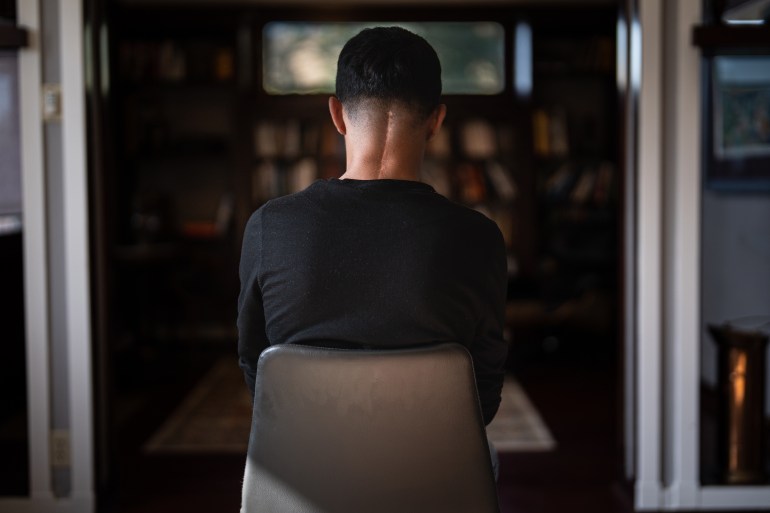
‘Miracle’ is awake
In September 2021, six weeks after the crash, Gamez woke up from a coma in a hospital in Salt Lake City, Utah. He couldn’t move his legs, and his voice was hoarse from being intubated. The nurses told him he was lucky to be alive. He wasn’t aware of how bad the crash was. His spine and skull were fractured, and part of his scalp had been torn off. “The doctors, they didn’t call me by my name, they walked over and said, ‘Hey, he’s awake, “Miracle” is awake.’ Only a ‘Miracle,’ they called me. They didn’t call me Lesvin, only ‘Miracle.’”
Gamez now lives with his uncle and is slowly learning how to walk again. He has a scar that runs along his spine from the base of his skull to the top of his shoulders, and another scar on the top of his head, now hidden by his hair. He walks with a limp on his right side and has difficulty moving his right hand. He says the pain is always there, and the doctors tell him it always will be.
Gamez said he’s determined to recover from the crash, both physically and emotionally. And once he does, he wants to pursue accountability from the US government for allowing Border Patrol agents to engage in deadly chases without consequences.
“It’s their job,” he said. “They get paid to do that, but they should find a way to do it where they don’t put lives at risk, where human lives aren’t lost. Because if that’s the deal, then they should just wait for us at the border with guns and shoot us before we cross over. Because that’s practically what they’re doing.”
Additional reporting by Paulo Cerrato and Josh Rushing.